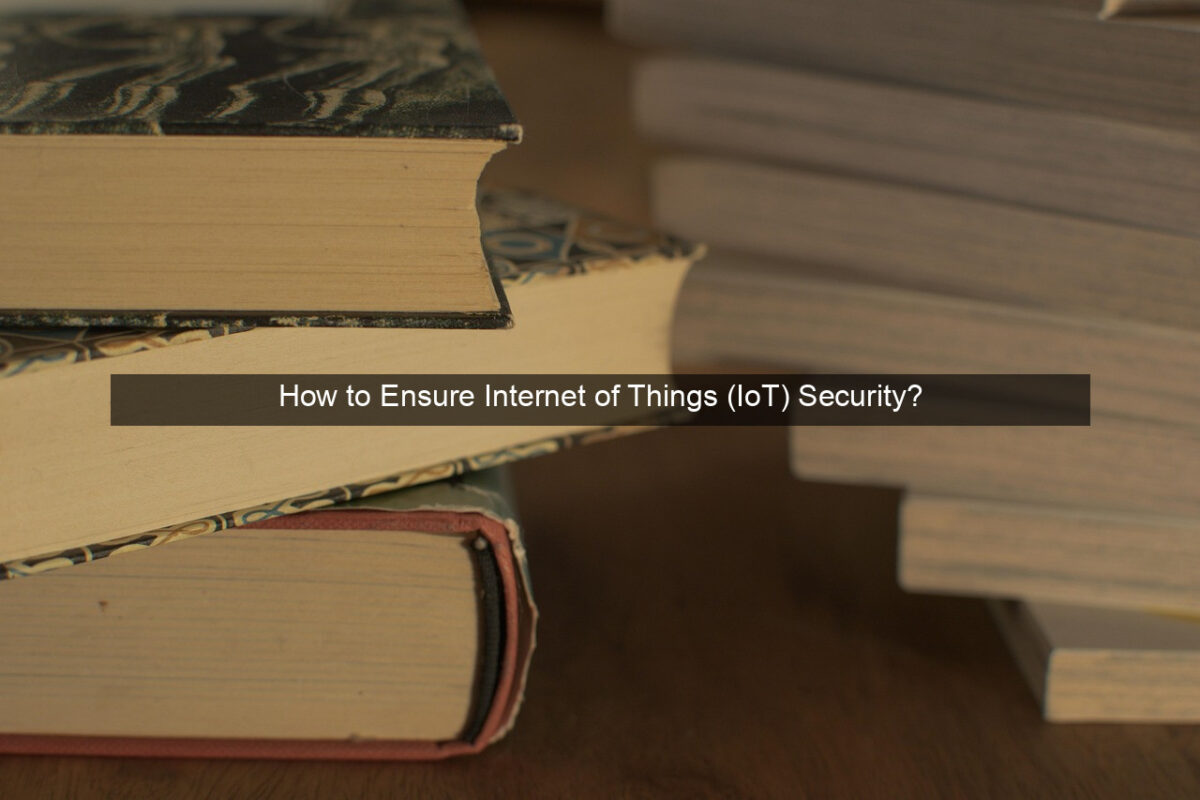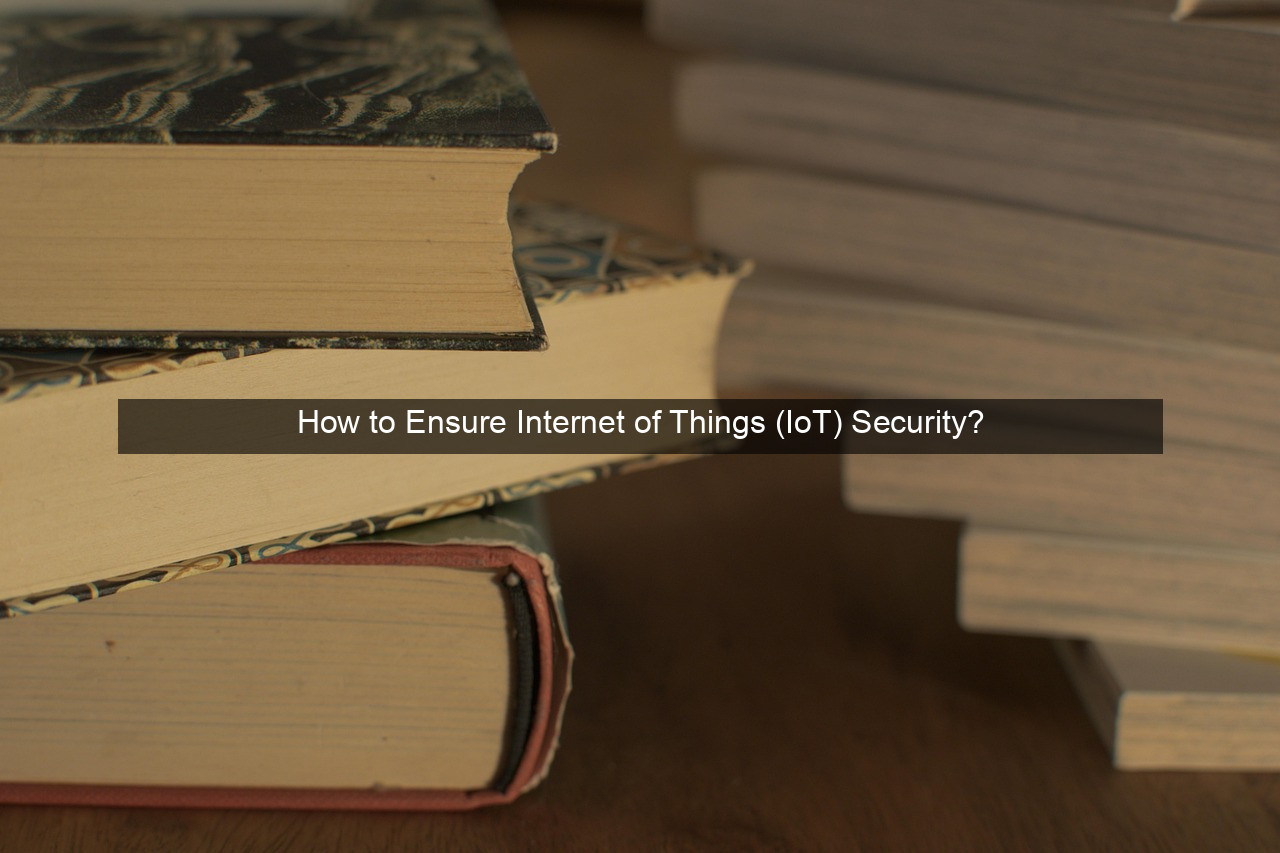How to Ensure Internet of Things (IoT) Security?

- How to Ensure Internet of Things (IoT) Security?
- How to Ensure Internet of Things (IoT) Security?
- Securing the IoT Ecosystem
- Device-Level Security
- Network Security
- Data Security and Privacy
- Security in the IoT Development Lifecycle
- Conclusion

How to Ensure Internet of Things (IoT) Security?
The Internet of Things (IoT) has revolutionized how we interact with the world, connecting everyday devices and generating massive amounts of data. From smart homes and wearables to industrial automation and connected cars, the IoT offers incredible benefits. However, this interconnectedness also presents significant security challenges. As more devices join the network, the potential attack surface expands exponentially, making IoT security a paramount concern. Ensuring the security of IoT devices and networks requires a multi-layered approach, addressing vulnerabilities at every level, from device design and manufacturing to data transmission and storage. Ignoring these crucial security measures can lead to data breaches, privacy violations, and even physical harm. This article will delve into the essential steps for establishing robust IoT security, protecting your data and ensuring the integrity of your connected systems.

Securing the IoT Ecosystem
Device-Level Security
Securing individual devices is the foundation of a robust IoT security strategy. This involves implementing strong authentication mechanisms, such as passwords and biometric authentication, to prevent unauthorized access. Regularly updating device firmware is also crucial to patch known vulnerabilities and protect against emerging threats. Furthermore, secure boot processes are essential to ensure that only authorized software runs on the device, preventing malware from compromising its functionality.
Data encryption plays a vital role in protecting sensitive information transmitted and stored by IoT devices. Encrypting data both in transit and at rest ensures that even if intercepted, the information remains unintelligible to unauthorized parties. Furthermore, secure storage of cryptographic keys is paramount to maintain the integrity of the encryption process. Robust key management systems are essential to prevent unauthorized access to these keys.
Hardware security modules (HSMs) provide an additional layer of protection by offering tamper-resistant storage and processing of cryptographic keys and other sensitive data. These specialized hardware components are designed to resist physical attacks and prevent unauthorized access to the sensitive information they contain. Implementing HSMs enhances the overall security posture of IoT devices, making them more resilient to sophisticated attacks.
Network Security
Protecting the network infrastructure is just as crucial as securing individual devices. Implementing firewalls and intrusion detection systems helps monitor network traffic and block unauthorized access attempts. Network segmentation further enhances security by isolating different parts of the network, limiting the impact of a potential breach. By dividing the network into smaller, more manageable segments, organizations can contain the spread of malware and prevent widespread damage.
Secure communication protocols, such as TLS/SSL, are essential for protecting data transmitted between IoT devices and the network. These protocols encrypt data in transit, ensuring confidentiality and integrity. Furthermore, using strong encryption algorithms and regularly updating certificates are vital to maintain the effectiveness of these security measures.
Implementing Virtual Private Networks (VPNs) can create secure connections for remote access to IoT devices. VPNs encrypt data transmitted between the remote device and the network, protecting it from eavesdropping and unauthorized access. This is particularly important for managing and monitoring IoT devices remotely, ensuring secure communication even over untrusted networks.
Data Security and Privacy
Protecting the vast amounts of data generated by IoT devices is paramount. Implementing data access control policies ensures that only authorized users and applications can access sensitive information. Regular data backups are also essential to protect against data loss due to hardware failures, cyberattacks, or other unforeseen events. Storing backups in a secure location and ensuring their integrity is crucial for effective data recovery.
Data anonymization and pseudonymization techniques can help protect user privacy by removing or obscuring personally identifiable information. These techniques allow organizations to analyze and utilize data without compromising the privacy of individuals. Implementing these techniques is crucial for complying with data privacy regulations and building trust with users.
Compliance with data privacy regulations, such as GDPR and CCPA, is essential for organizations operating in the IoT space. These regulations establish strict guidelines for collecting, processing, and storing personal data. Adhering to these regulations is not only a legal requirement but also a crucial step in building trust with users and maintaining a positive reputation.
Security in the IoT Development Lifecycle
Integrating security considerations throughout the entire IoT development lifecycle is essential for building secure and resilient systems. This involves conducting thorough security assessments during the design and development phases to identify and mitigate potential vulnerabilities early on. Secure coding practices and code reviews further enhance the security of the software running on IoT devices.
Regular security testing and vulnerability assessments are crucial for identifying and addressing potential weaknesses in the IoT ecosystem. Penetration testing simulates real-world attacks to uncover vulnerabilities and assess the effectiveness of existing security measures. These tests help organizations proactively identify and address security gaps before they can be exploited by malicious actors.
Implementing a robust security incident response plan is essential for handling security breaches and minimizing their impact. A well-defined incident response plan outlines the procedures for detecting, responding to, and recovering from security incidents. This includes establishing clear communication channels, assigning roles and responsibilities, and implementing procedures for containing and eradicating threats.
Conclusion
Securing the IoT ecosystem requires a comprehensive and proactive approach, addressing vulnerabilities at every level. By implementing strong security measures across devices, networks, and data, organizations can mitigate risks, protect sensitive information, and ensure the integrity of their connected systems. As the IoT continues to evolve, staying ahead of emerging threats and adapting security strategies will be crucial for realizing the full potential of this transformative technology while safeguarding against its inherent risks. A commitment to IoT security is not just a technical necessity, but a fundamental requirement for building a trustworthy and sustainable connected future.
What are the main security challenges in IoT?
The main security challenges in IoT include the sheer number and diversity of devices, limited resources on devices, insecure communication protocols, lack of standardization, and the difficulty of patching vulnerabilities across a vast network.
How can data encryption improve IoT security?
Data encryption protects sensitive information by converting it into an unreadable format, preventing unauthorized access even if intercepted. This is crucial for protecting data both in transit and at rest.
What is the role of network segmentation in IoT security?
Network segmentation isolates different parts of the network, limiting the impact of a security breach. If one segment is compromised, the others remain protected.
Why is security in the IoT development lifecycle important?
Addressing security considerations throughout the development lifecycle helps build secure systems from the ground up, preventing vulnerabilities before they become embedded in the final product.
What are some best practices for IoT security?
Some best practices include strong device authentication, regular firmware updates, data encryption, network segmentation, secure communication protocols, and a robust incident response plan.
| Security Layer | Key Measures |
|---|---|
| Device | Strong authentication, firmware updates, data encryption |
| Network | Firewalls, intrusion detection, secure protocols |
| Data | Access control, backups, anonymization |
- Implement strong passwords and multi-factor authentication.
- Keep device firmware updated.
- Encrypt data in transit and at rest.




